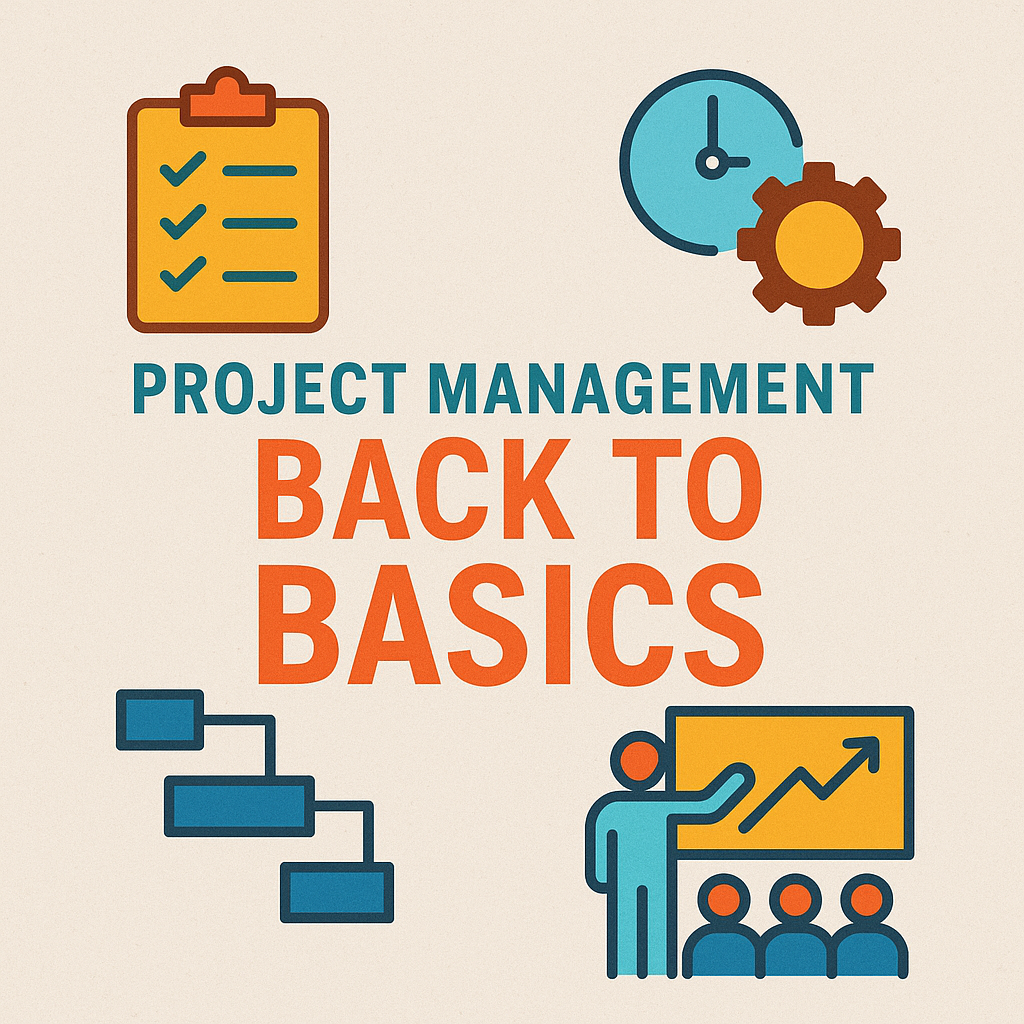Project management is having a quiet identity crisis. We have reached an inflection point. Interest in Waterfall and Agile has waned. Hybrid is still ill-defined. Everyone talks about AI, but its impact on the profession remains unclear.
Instead of chasing the new, new thing, project managers should return to the basics. The factors that drive project success and failure are well understood. Existing frameworks and practices incorporate the capabilities to address these problems. The challenge and opportunity are consistently applying what we know will work.
This series will share basic, foundational practices that will improve project outcomes.
State of the Industry
The use of predictive project management approaches has been in decline for years. Agile peaked in 2022 and seems to be in a free fall. Lean and Kanban principles are embedded in many practices but are often underutilized.
Waterfall, predictive, plan-driven project management approaches are highly structured and optimized for efforts where the cost of change is high. Its primary shortcomings are well-known—it is nearly impossible to build a plan that is impervious to change. However, the structure and many practices associated with waterfall provide value and should not be automatically dismissed.
The Agile movement established a set of values, principles, and practices designed to embrace change and uncertainty. Small, motivated teams using adaptive development approaches have proven to be more successful for software and other knowledge-work projects. Its practices have become an essential part of the project management canon. However, too many organizations implemented practices without changing the culture.
Lean and Kanban have their roots in the Toyota Production System, dating back to the 1950s. These principles and practices have been incorporated into project management, as exemplified by a focus on value streams, eliminating waste, and creating a flow. The Kanban board has become so ubiquitous that many to-do applications include it as a standard view.
Hybrid is defined as a combination of practices from more than one approach and probably describes most projects. The challenge is that this broad definition is hard to describe in tactical, tangible terms. Without a clear project management plan, these projects risk devolving into chaos.
Artificial intelligence is attracting considerable attention. Purpose-built AI tools, training, and certifications are widespread. The potential to save time and effort is very appealing. AI tools can improve estimates, track and connect the dots, and offer valuable insights. However, we should proceed with caution. The MIT Media Lab found that 95% of organizations had zero return on their AI investments. Additionally, keeping “humans in the loop” will still be necessary.
How Did We Get Here
People have executed large-scale engineering and construction projects since ancient times. However, project management only became a formal profession in the past century. The Gantt Chart was used to plan World War I battles and build the Empire State Building. Critical Path, PERT, and related tools were developed in the 1950s to support large defense projects. The European International Project Management Association and the U.S.-based Project Management Institute were founded only in the 1960s.
Engineering principles influenced early project management approaches. Designing the solution and developing detailed plans before beginning execution is required in construction. Changing the plan after the concrete is poured is a bad idea.
The effort and cost of developing software were high in the early days of computing. A typo or missing comma in a line of code could take hours to fix. The waterfall approach was adopted to ensure an accurate design before starting work. However, it did not recognize that people were the weak link in the chain. Visualizing how software will work from written documents is nearly impossible; as a result, misunderstandings were common.
Personal computers ushered in an entirely new way to create software in the 1980s. The effort and cost of developing software dropped precipitously. Fixing a bad line of code took only minutes. Quickly developing and demonstrating working software components to get user feedback was now possible.
Back to Basics
The vice president of enterprise project management capabilities at a large aerospace firm often reminds project managers that “No project fails for an unknown reason. You may not know the source of failure, but someone you know does.” I believe this is a universal truth.
I am rarely surprised when a project goes off track or fails. The failure patterns are well known. Overly optimistic assumptions lead to unrealistic plans. Overestimating capabilities results in an inability to deliver the solution. Additionally, knowable and identified risks are not actively managed.
Historical trends from the Project Management Institute and the Standish Group reveal disappointing trends in project performance. The percentage of projects meeting expectations remains low. An estimated 10% to 30% of project investments are wasted. The causes of failure—poor user involvement, lack of executive support, and unclear scope—have remained unchanged over the past 30 years.
Recent research by the Project Management Institute found that a project’s net success (net promoter) score could increase sevenfold if (1) success criteria were defined upfront, (2) a performance measurement system was implemented, and (3) performance was tracked throughout the project. Furthermore, the project approach has little bearing on its success.
Project management experience and maturity are differentiators. Success breeds success. Champion organizations—those with an 80% success rate—are nearly three times more likely to succeed than underperformers. Project managers with business acumen have 30% higher net performance scores.
These findings are not surprising. Executing basic, foundational practices is critical. The building blocks for great project management are not a mystery. The practices and tools are known.
This Back to Basics series will explain how project managers can use existing frameworks, practices, and tools to deliver projects more reliably. Silver bullet solutions do not exist. Good project management is hard work. We have the knowledge; we need to apply it more consistently.
For some, the series may serve as a reminder of what we should be doing. Others might discover or rediscover new options for existing problems. The options are meant to be representative, not exhaustive. Like the Scrum Guide, it is intentionally incomplete. Understanding a project’s context and tailoring it accordingly is a core principle in project management.
Returning to basics requires injecting and maintaining intentionality. Decisions on how to plan, manage, and execute the project should be made thoughtfully. Effectively managing execution requires establishing processes and then adhering to them.
© 2025, Alan Zucker; Project Management Essentials, LLC
See related articles:
- Hybrid Project Management: Part 1, What is Hybrid?
- Hybrid Project Management: Part 4, Picking the Practices
- Intentional Project Management
- Successful Projects: What We Really Know
To learn more about our training and consulting services or subscribe to our newsletter, visit our website: https://www.pmessentials.us/.

